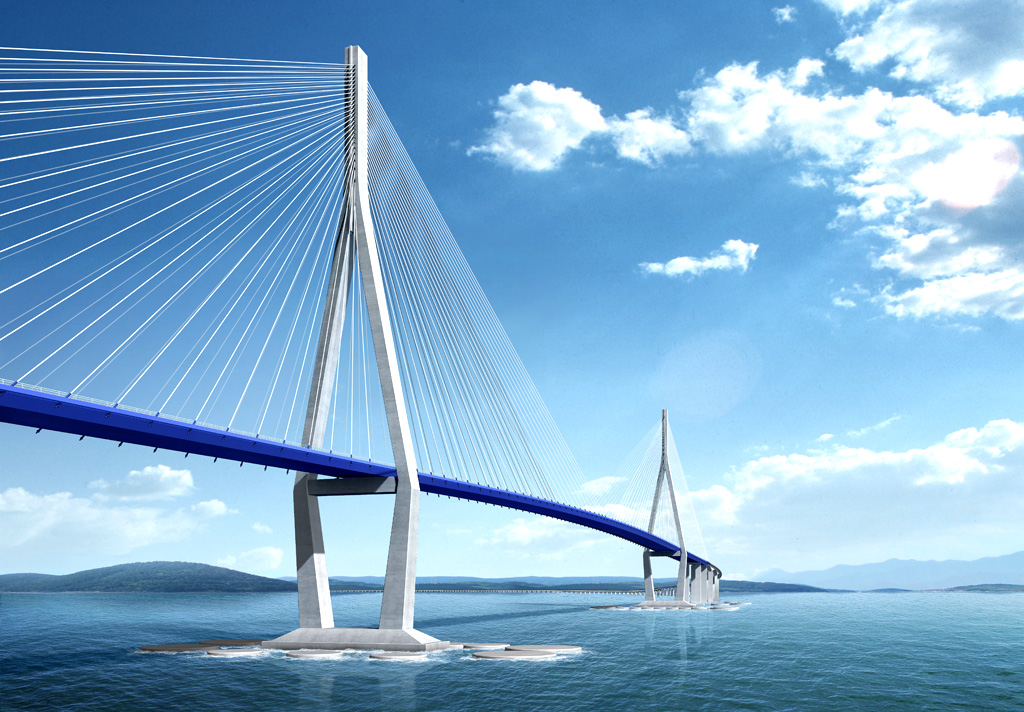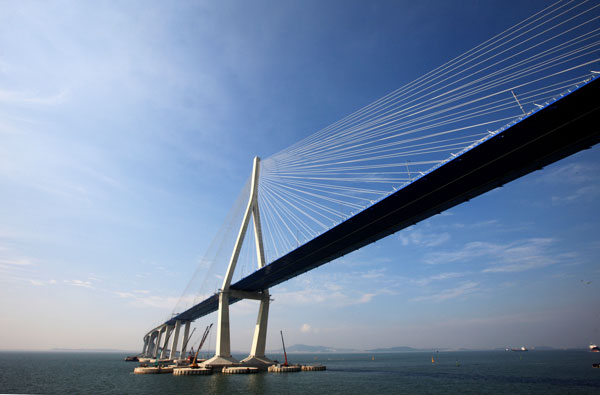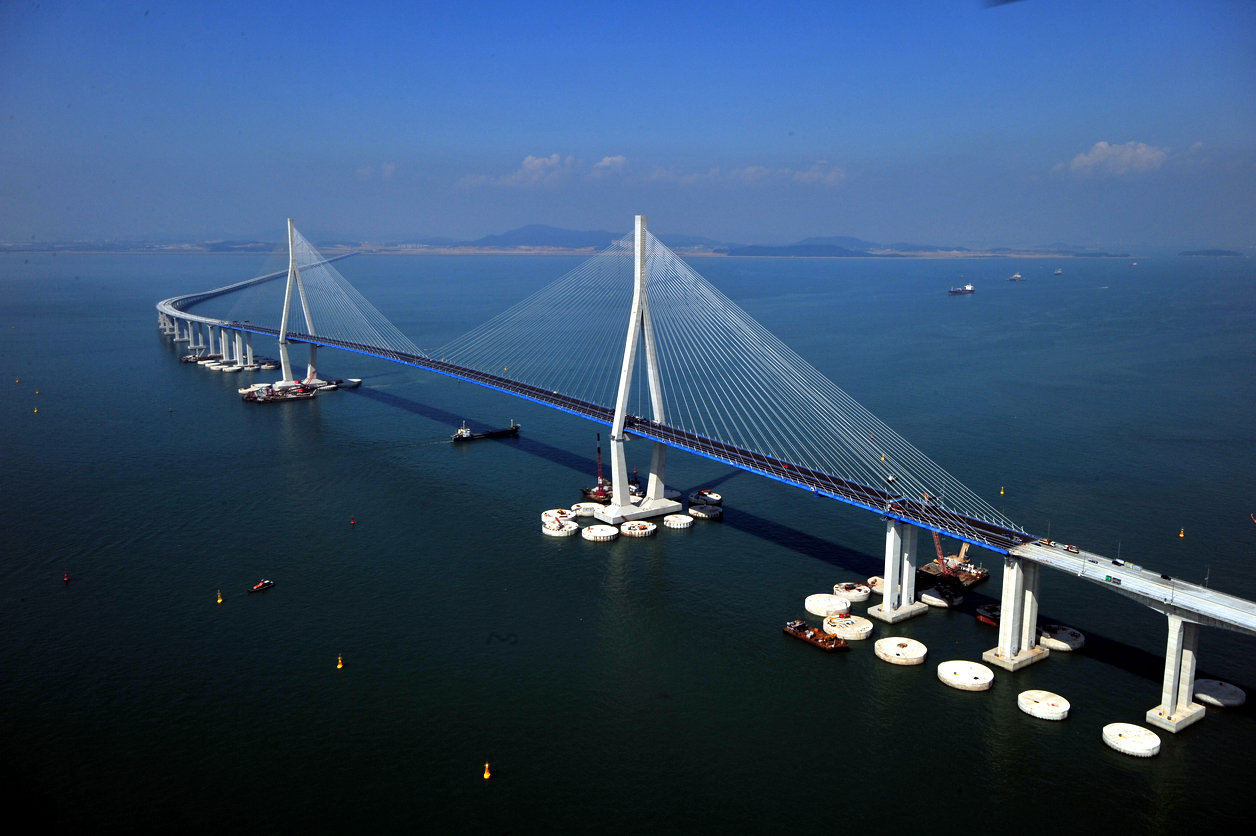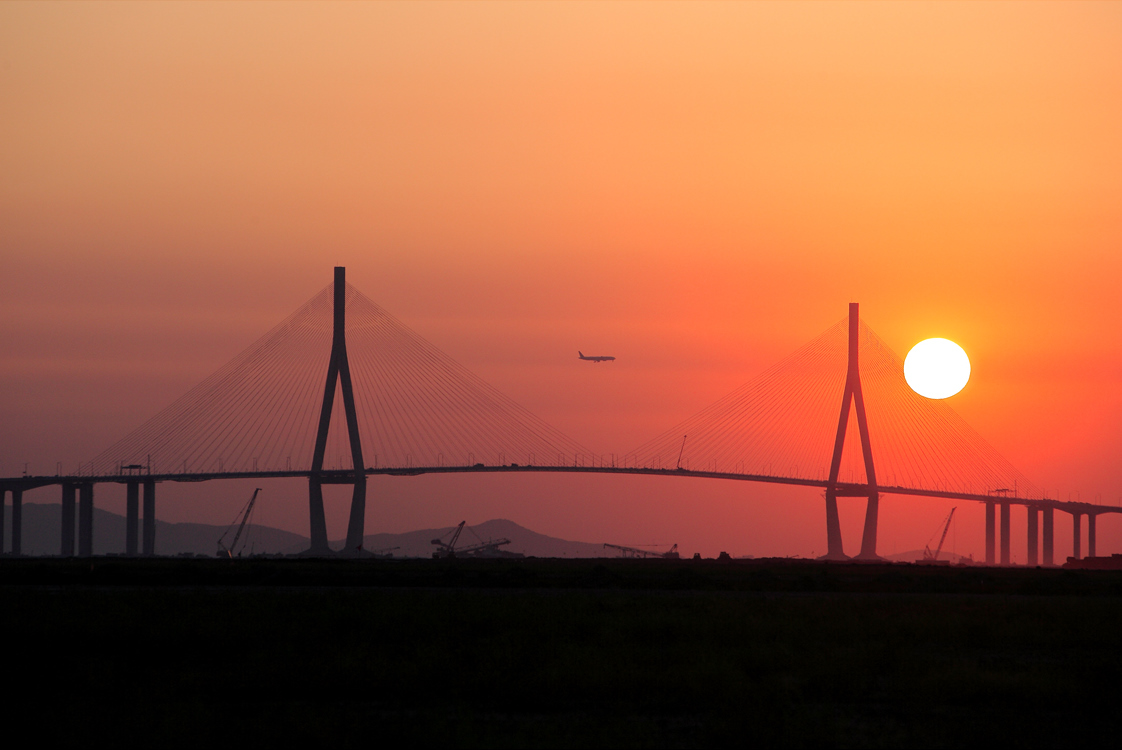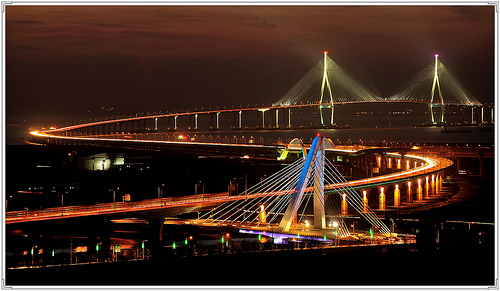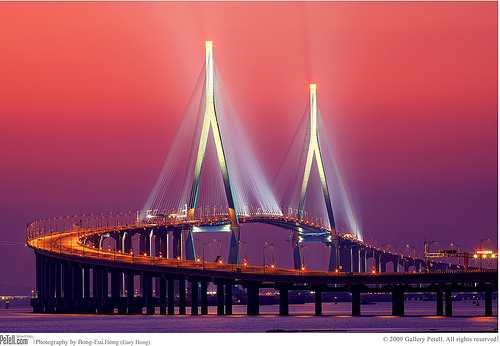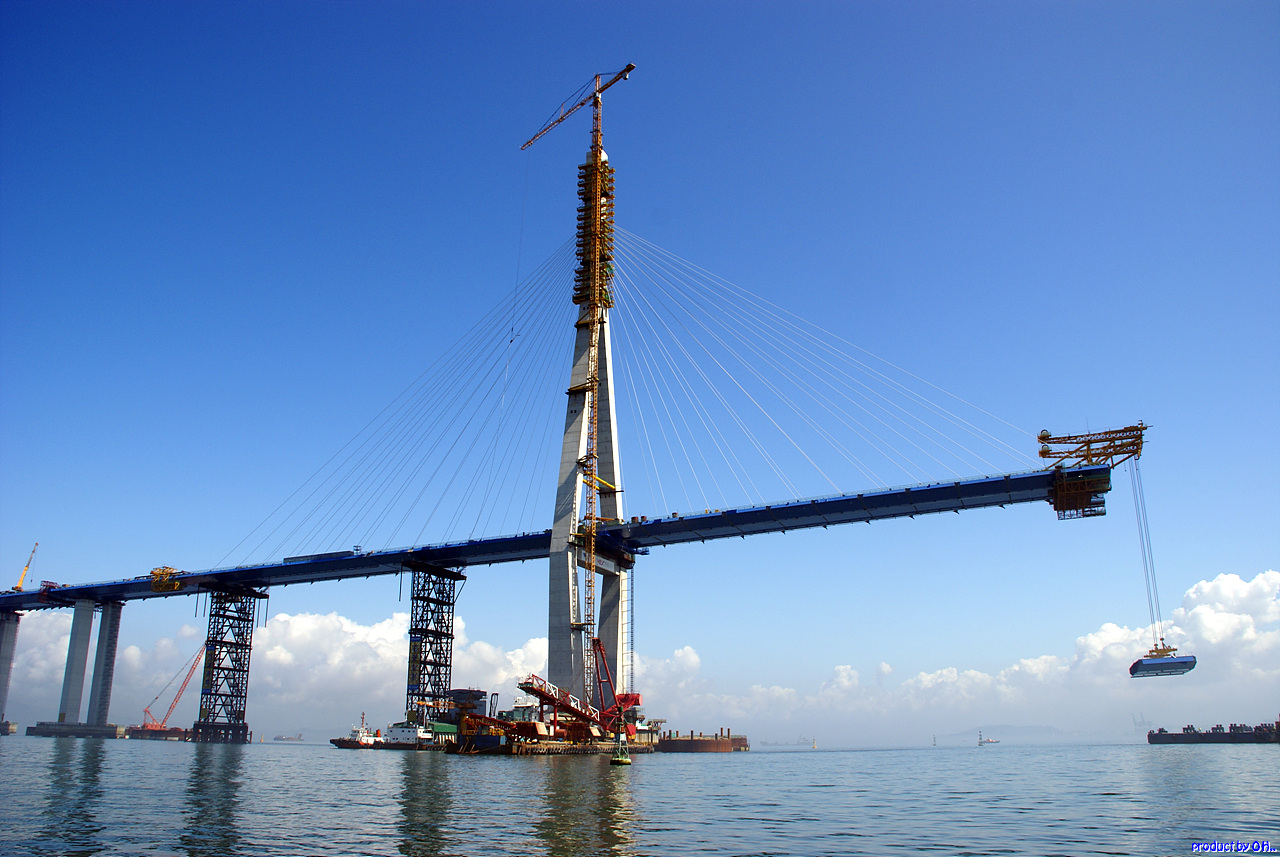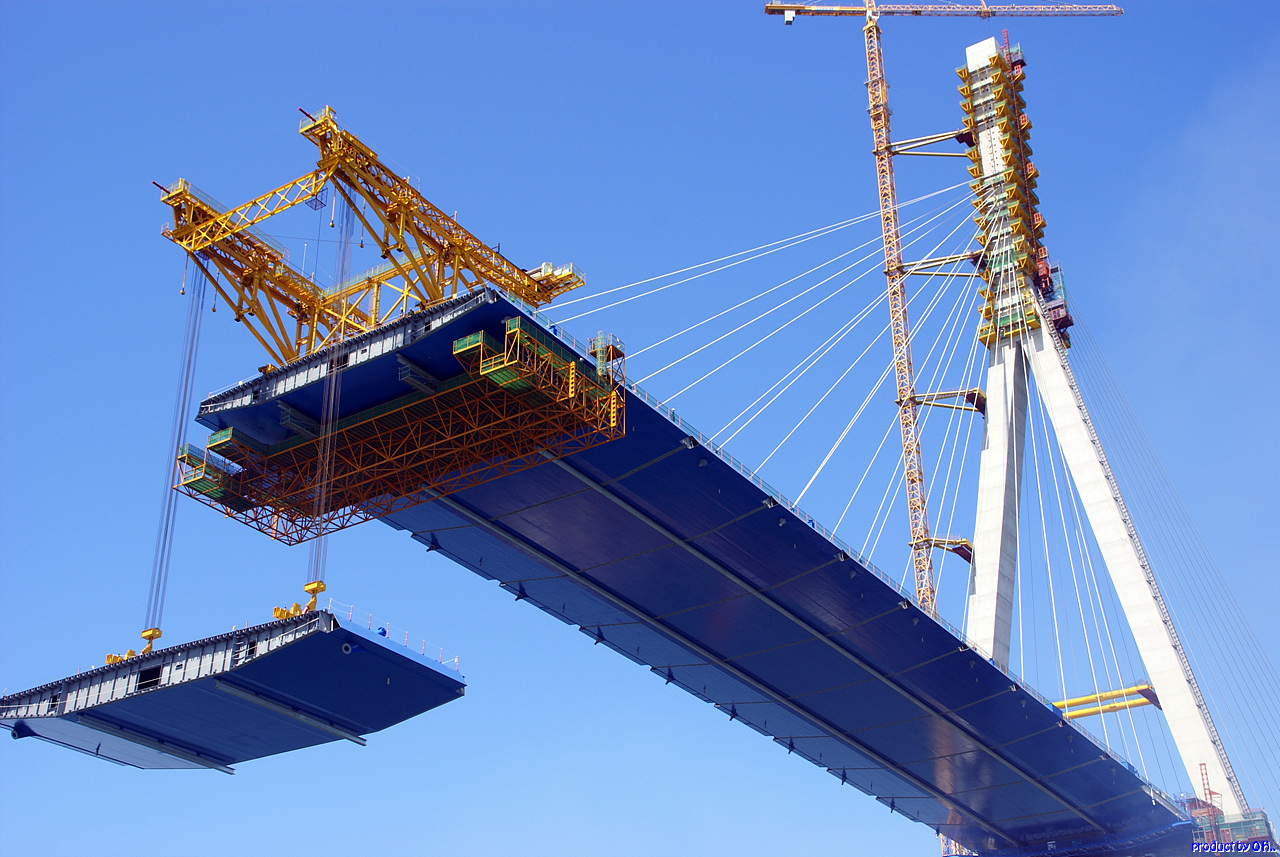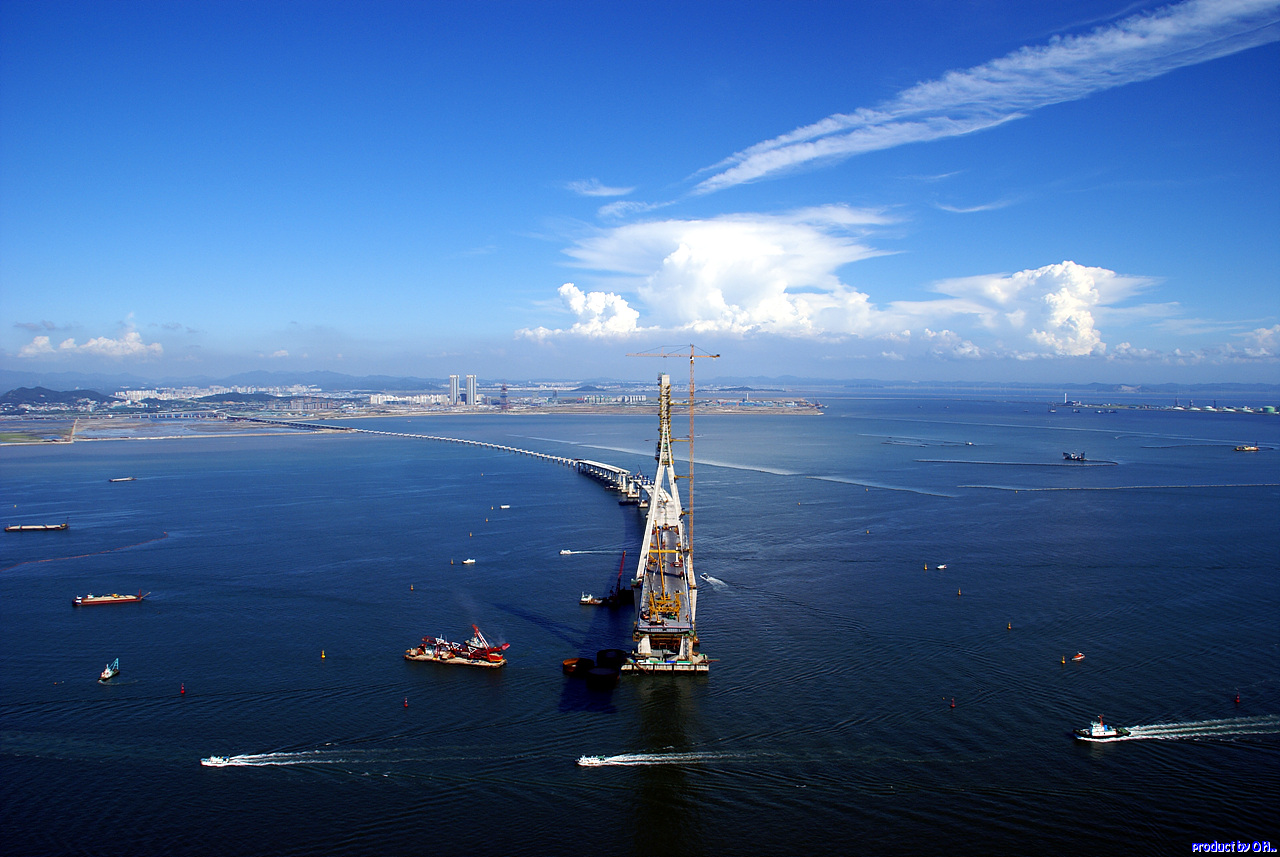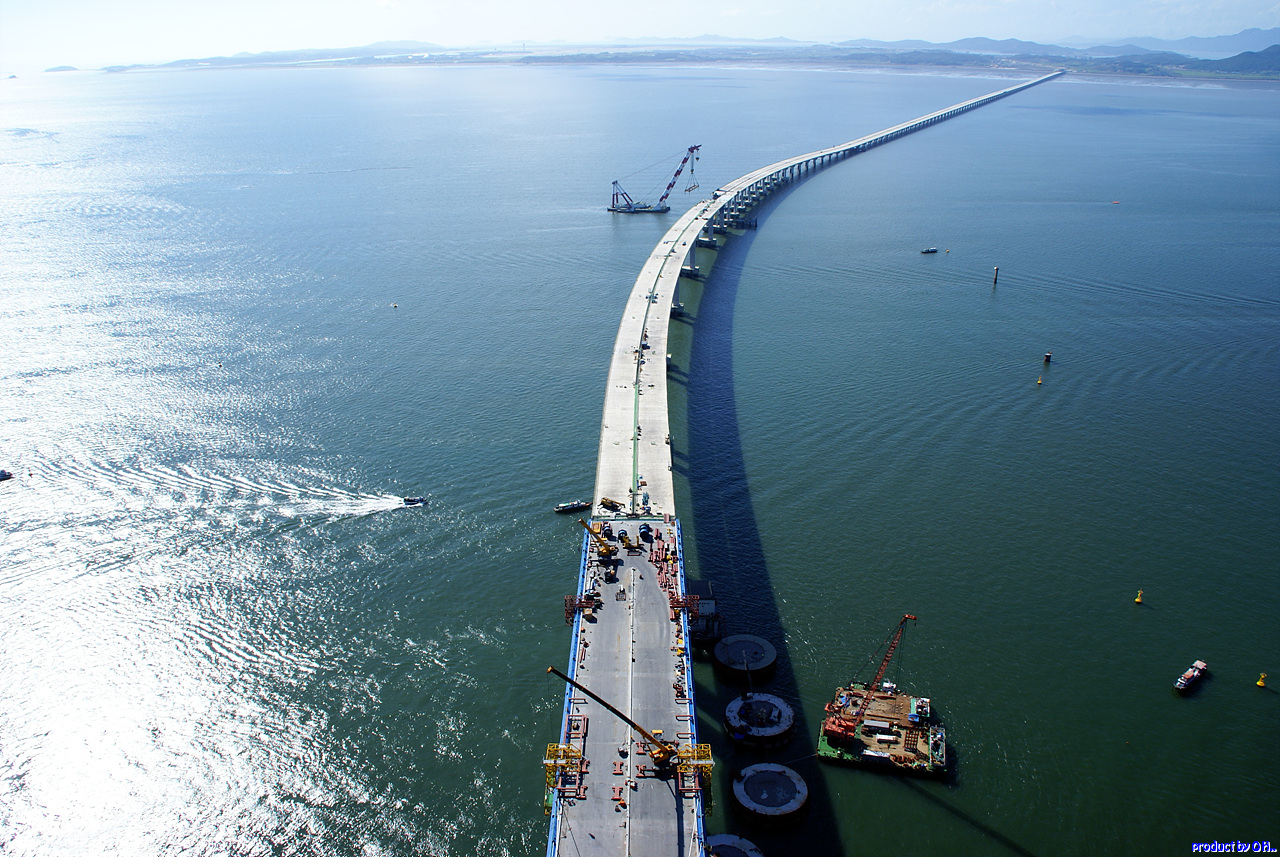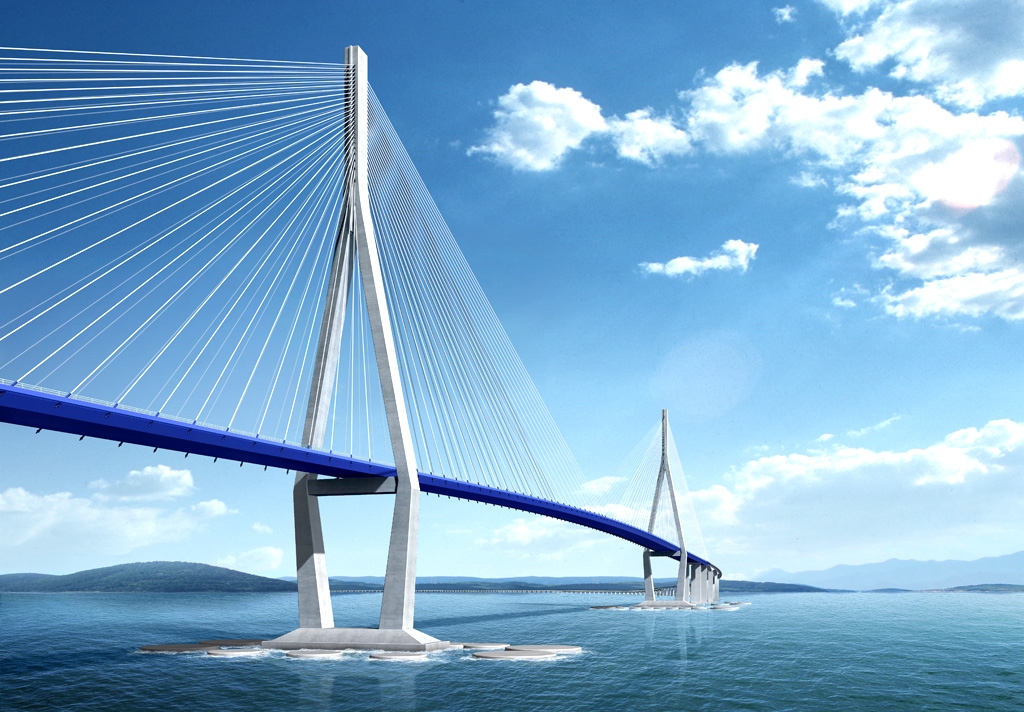

Along with the best and optimal designing of various infrastructural structures, we are acting as a leading in the areas of the designing of long-span bridges on the basis of the accumulated design experience and know-how for various special bridges, in particular the Gwangan bridge, Yeongjong bridge and Incheon bridge, which all can be represented as an axis of the history of bridge construction in Korea.
Seoyoung has technological capabilities for super long-span bridge constructions based on exhaustive preparations for the adoption of advanced designing technique, ceaseless technology development and the best design capabilities in Korea.
Incheon Bridge is the longest cable-stayed bridge in Korea and the 5th longest in the world with the main span of 800m, It was constructed to achieve the goal of creating hub country for economy and establishment of composite logistics and transportation system of the economic free zone in Northeast Asia. Also, the construction is planned to serve as an alternative route for the New Airport Expressway in the event of emergency as well as to improve the accessibility to the Incheon International Airport from the southern regions of the Capital Region of Seoul.
We accumulated technological capabilities and know-how through the construction of the cable-stayed bridge, which is the longest span bridge in Korea and one of the longest in the world, with the total length of 11.6km. It also managed to leave behind numerous historical footsteps including the innovative technologies in cable supported bridges based on the format of the execution, design, construction and maintenance of the project.
It is a project that was accomplished using foreign investments when Korea was confronted with nation-wide economic difficulties due to the IMF financial crisis, thereby overcoming the foreign currency crisis. The construction period was shortened substantially through the application of the FAST TRACK format for the project. Design was executed in the format of Limit State Design, which is applied in many of the advanced countries, with the application of the viscoplastic design of the grounds through the technologically static load test of large diameter piles, and collison protection design from vessels impacts, etc. for the first time in Korea.
In addition, it was possible to complete the maritime bridge with length of more than 10km within 5 years by manufacturing and installing the structures through automated manufacturing processes for the majority of the construction including the application of FSLM construction for the first time in Korea in order to shorten the construction time and to overcome the differences in the tides. This effort resulted in the honor of being selected as one of the ’10 most amazing construction projects in the world’ by the [Construction News], a English newspaper specializing in the area of construction.
